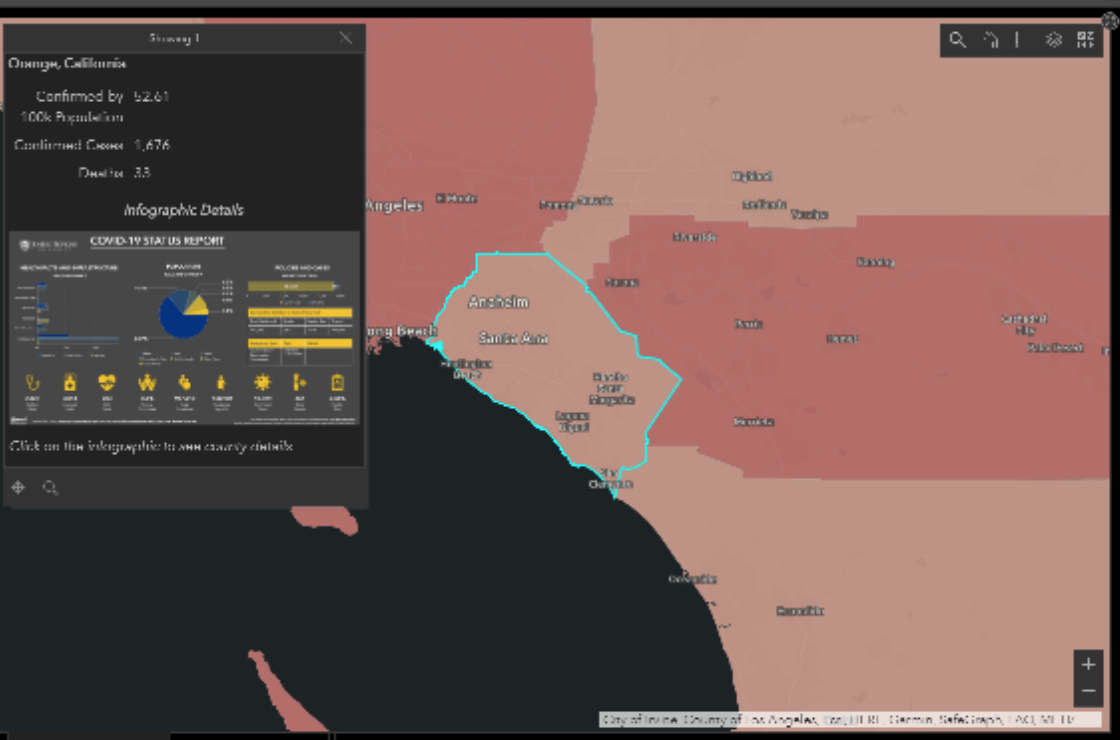Orange County’s COVID hospitalizations continue to climb, adding more than 50 patients in a day, according to the Orange County Health Care Agency.
On Thursday, hospitalizations exceeded the peak of the first COVID infection wave in July 2020, and officials reported a child younger than 5 had died from the disease, the county’s third pediatric death of the pandemic.
The child, who died last month, was “in generally good health,” Dr. Regina Chinsio-Kwong, the county’s deputy health officer, said on a weekly media call Friday.
“We must continue to be mindful of protecting children,” she said. “I’m sad to see only 26% have started the vaccination process. I’m hoping more parents will choose to get their children vaccinated.”
It’s not certain whether the child had been infected with the Delta or Omicron variant, Chinsio-Kwong said.
But she said the Omicron variant is having more of an effect on children than previous variants, and she expects pediatric cases to rise locally, mirroring a national trend.
“It is really causing more serious respiratory illness in the young and we can expect to see it here soon,” she said.
According to the OCHCA, the number of COVID-infected hospital patients in Orange County increased from 724 Thursday to 779 Friday, with the number of patients in intensive care jumping up from 109 to 122.
“Our hospitals are full,” Chinsio-Kwong said.
The last time COVID hospitalizations reached that level was mid-February of last year, during a post-holiday winter surge of infections.
Exactly one year ago — on Jan. 7, 2021 — the all-time record was set for COVID hospitalizations with 2,259 patients, just as vaccines were being rolled out for front-line medical staff and first responders.
The summer 2021 peak of hospitalizations was reached on Aug. 26, with 592 patients.
During the first virus wave in the summer of 2020, hospitalizations peaked July 14 at 722.
Chinsio-Kwong said she misspoke previously when she said that numbers for COVID hospitalizations reflected patients who were truly afflicted with the virus and didn’t also include other patients who also happened to test positive. Those “incidental” cases are still included in hospitalization numbers, she said.
Chinsio-Kwong said that with more than 2 million Orange County residents vaccinated, there is a “high likelihood” that many who test positive are not experiencing symptoms.
But Chinsio-Kwong added that “ambulance drop-off times are high” at 52 minutes and 36 seconds as of Thursday. Ideally, the time to drop off patients at a hospital should not exceed 30 minutes, she said.
“Most of our hospitals have resurrected their surge tents to handle capacity,” she said.
But hospitals are also “experiencing shortages in staff,” she said.
“Anywhere from 10 to 20% are calling in sick or having an exposure or coming up positive in COVID tests,” she said.
Hospital officials, however, are having difficulty hiring more staff to handle the backlog of patients and may have to appeal to the state for help, Chinsio-Kwong said.
“So it is a dire situation right now,” she said.
There also is a “temporary suspension from other counties” sending patients to Orange County because the county’s 25 hospitals cannot accept any more patients, she said.
“The next step if we continue to have these high drop-off times is some hospitals will have to start thinking about stopping elective procedures,” Chinsio-Kwong said.
Meanwhile, the county reported 6,428 new COVID cases Friday, boosting the cumulative total to 374,860. The county also logged three more fatalities, increasing the overall death toll to 5,906.
All of the deaths logged Friday occurred in December. The death toll for last month is now 57.
Chinso-Kwong said 50 of those who died were unvaccinated and the rest were seniors.
Two fatalities reported Thursday were skilled nursing facility residents, hiking the number of deaths in that category since the pandemic began to 1,220. The overall death toll also includes 647 assisted living facility residents.
There has been a jump in outbreaks in nursing homes in this current wave, with outbreaks in 23 elderly assisted living facilities and 17 skilled nursing facilities.
The county has officially sequenced 292 cases of the Omicron variant as of Sunday, the latest data available, according to the OCHCA’s data.
Orange County had 18.3% of its intensive care unit patient beds available and 66% of its ventilators as of Friday. Chinsio-Kwong said officials get “nervous” when the ICU bed availability drops below 20%.
Of the hospitalized patients, 87% are unvaccinated, and 88% of the ICU patients are not inoculated.
The county’s adjusted daily case rate per 100,000 residents jumped from 53.6 Wednesday to 64 Thursday. The testing positivity rate soared up from 16.2% to 19.1%, and it increased from 16% to 19.3% in the health equity quartile, which measures underserved communities hardest hit by the pandemic.
The seven-day average for tests per 100,000 increased from 513.9 Wednesday to 561.2 Thursday.
The wave of infections is also affecting entertainment and courthouse functions.
In Orange County’s jails, the number of infected inmates rose from 66 on Monday to 103 as of Friday, according to Carrie Braun, a spokeswoman for the Orange County Sheriff’s Department. Of those, 25 were newly booked inmates and the rest were in the general population.
Of the department’s 3,800 employees, 214 were infected, Braun said.
Soka Performing Arts Center is postponing its season opening by two weeks. Officials at South Coast Repertory in Costa Mesa canceled live performances for Saturday and Sunday because some of its theater company has tested positive for coronavirus. The theater hopes to resume performances Jan. 16.
At the Orange County Superior Courts, attorneys were being encouraged to do more virtual appearances for most hearings, reserving live appearances for evidentiary hearings and trials.
On Thursday, the Mission Viejo Library began requiring anyone wanting to use the library to make an appointment so the staff can socially distance patrons.
January 2021 remains the deadliest month of the pandemic with a death toll of 1,596, ahead of December 2020, the next deadliest with 985 people lost to the virus.
The case rate per 100,000 residents for the unvaccinated jumped from 60.6 on Dec. 25 to 180.1 as of Jan. 1. For the vaccinated the case rate increased from 37.9 on Christmas Day to 108.5 by New Year’s Day.
The number of fully vaccinated residents in Orange County increased from 2,328,647 to 2,341,562, according to data released Thursday.
That number includes an increase from 2,176,795 last week to 2,189,337 of residents who have received the two-dose regimen of vaccines from Pfizer or Moderna.
The number of residents receiving the one-dose Johnson & Johnson vaccine increased from 151,852 to 152,225. Booster shots increased from 837,313 last week to 900,815.
As of Jan. 3, 68% of the county were fully vaccinated, Chinsio-Kwong said.
In the relatively recently eligible age group of 5 to 11 years old, 46,791 kids have been vaccinated versus 221,789 who have not gotten jabbed. It’s the least vaccinated age group in the county. The next worst vaccinated age group is 25 to 34 with 312,736 inoculated and 146,665 who have not gotten a shot.
The most vaccinated age groups are seniors.
To support local communities with additional testing facilities and capacity amid the national surge in COVID-19 cases driven by the Omicron variant, California Governor Gavin Newsom on Friday, Jan. 7, announced the activation the California National Guard.
“California has led the country’s fight against COVID-19, implementing first-in-the-nation public health measures that have helped save tens of thousands of lives,” Newsom said. “We continue to support communities in their response to COVID by bolstering testing capacity.”
The announcement comes as Omicron continues to spread rapidly across the globe, accounting for at least 80% of COVID-19 cases in California.







